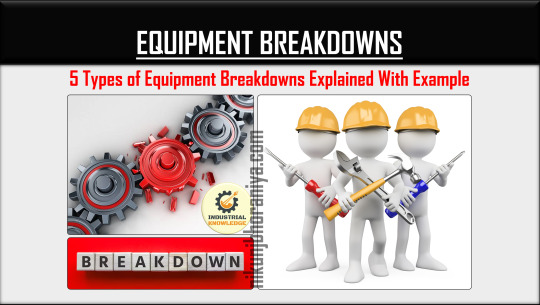#qms
Explore tagged Tumblr posts
Text

berlin 2023
19 notes
·
View notes
Text
A Comparison Of ISO 9001 And Quality Management System
6 notes
·
View notes
Text
What is "IWTBN" ?
IWTBN or “It won’t turn back now” is an illustration project made by dramairime that is mostly uploaded on youtube, the series describes about a middle schooler suffering through multiple mental conditions such as Depression, PTSD (Post-traumatic stress disorder), and much terrible things. This illustration project is actually a way to spread more awareness and signs about certain mental conditions that are described through different styles of illustrations.
One of the most viewed and favorite style illustration is the paper project, I'll be posting more of these very soon soooo stay tuned! I'll post the information about the characters too ヾ(。・ω・)シ !!
youtube
youtube
#iwtbn#itwontturnbacknow#gracie iwtbn#dreami iwtbn#qms#iwtbn qms#mental health#mental health awareness#psychology#mentalhealth#self awareness#healing#paper style#illustration#artwork#illustrators on tumblr#digital painting#drawing#paper art#traditional illustration#artists on tumblr#small artist#digital artist#oc artist#art on tumblr#illustrator#therapy#depression awareness#ptsd awareness#mental illness
3 notes
·
View notes
Text
Eu recebi um novo certificado 🎓 E este tem muito valor para mim 😍🥰😘🤩 Mais uma meta alcançada com muito esforço 🙌👏👍👊🤘🙏🫵 Certifica que eu frequentei e concluí com sucesso a avaliação do curso 👨🏫📚✏️📖 realizado pelo @bureauveritasbr 🏫😍🥰😘🤩 o exame para o PR328: Curso de Formação de Auditor Líder QMS ISO 9001:2015 Curso nº 17929 certificado pelo CQI e IRCA 😍🥰😘🤩 Este curso satisfaz os requisitos de treinamento para o Sistema Certificação de Auditor CQI e IRCA QMS 🙌👏👍👊🤘🙏🫵

2 notes
·
View notes
Text

➡️ What is an Equipment Breakdown? Types of Breakdowns | Examples
#lean six sigma#excellence#tutorial#kaizen#iso9001#leansixsigma#tutorials#leanmanufacturing#5s#oee#industrialengineering#pokayoke#7qctools#histogram#tpm#iatf16949#g8d#iatf#qms#vsmstudy#flowchart#histograms#smartgoal#DMAIC#5Why#BlackBelt#GreenBelt#YellowBelt
2 notes
·
View notes
Text
youtube
qms -- t love
1 note
·
View note
Text
@omegaversereloaded @punkitt-is-here @tamamita @skunkes @ot3 @valtsv @wolfertinger666 @paper-mario-wiki @chokulit @noble-kale @pitbolshevik @neechees @memingursa @afro-elf @beserkerjewel @feluka @i-am-a-fish @nyancrimew @spongebobssquarepants @sabertoothwalrus @90-ghost @komsomolka @sawasawako @hotvampireadjacent @certifiedsexed @isuggestforcefem @3000s @pissvortex @prisonhannibal @apas-95 @vampiricvenus @turtletoria @marxism-transgenderism @beetledrink @bevsi @spacebeyonce @bonkcreat @11thsense @boobieteriat @sporesgalaxy @spitblaze @space-is-the-place2 @sar-soor @sayruq @sadhoc @sappho114 @sailor-plut @gallade-x-treme @palhelp @paleolatrans
This is the worst Eid I have ever experienced in my entire life. I lost all my friends in the war and I am left alone here suffering from the pain of loss. I used to go and visit my friends, but today I went to their homes and found their mothers collapsing from crying and grieving over the loss of their sons. We used to meet and go out and spend a pleasant time together, but unfortunately today I went and visited them in the cemetery and sat next to them all day crying from the intensity of my pain and regret. How difficult this feeling is for me and I cannot bear it!!! 😭


Please help me and my family by donating so we can escape this war and genocide and start a new, safe life!!🥺
#free gaza#free palestine#gaza#gaza genocide#gazaunderattack#gaza strip#war on gaza#long live palestine#palestinian art#free palastine#australia#leidy amelia#qms#amazing body#amazing beauty#america#amazon#the amazing digital circus#animals#amor#humanity#hollywood#history#so hot and sexy#fallout#family#friends#six pac abs#sixpack#advertising
4K notes
·
View notes
Text
youtube
📢 Did you know? Most API audit issues start with poor document control
How do organizations keep critical documents in check?
It all starts with the Control of Documents procedure — a key requirement in API Q1 & Q2.
✅ Internal docs: Must be approved, reviewed & updated.
✅ External docs: Controlled & integrated into your processes.
🎥 Watch this reel to learn how API-compliant companies manage documentation effectively.
#apistandards#apiconsultant#apispecq2#apispecq1certification#Documentation#auditready#Youtube#vegasconsulting#oilandgasindustry#riskmanagement#qms#qualitymanagement
0 notes
Text

ISO 9001 CERTIFICATION SERVICES
0 notes
Text

hamburg 2023
43 notes
·
View notes
Text
Quality Management Systems (QMS) and Their Impact on the Pharma Industry
In the ever-evolving pharmaceutical industry, maintaining high-quality standards is not just a goal—it’s a non-negotiable responsibility. The implementation of an effective Quality Management System (QMS) is central to ensuring consistency, safety, and regulatory compliance in all aspects of drug development and manufacturing.
A QMS is a comprehensive framework of policies, procedures, and processes that guide a pharmaceutical company in delivering quality products. It touches every stage of the product lifecycle—from raw material procurement and formulation to packaging and post-market surveillance.
The Core of a QMS
A well-structured QMS in pharma covers several key elements, including:
Document control: Ensuring that standard operating procedures (SOPs), protocols, and records are current and easily accessible.
Change control: Managing modifications to processes or equipment to avoid unintended consequences.
Deviation management: Tracking unexpected events or out-of-specification results to implement corrective and preventive actions (CAPA).
Training programs: Ensuring personnel are trained and competent in current quality practices.
Internal audits: Conducted regularly to identify gaps, non-compliance, or risks in existing systems.
Risk management: Evaluating and mitigating potential risks that could impact product quality or patient safety.
All these elements work together to help pharmaceutical companies meet regulatory requirements like GMP, ICH Q10, and 21 CFR Part 11.
Why QMS Is Critical in Pharma
In the pharma industry, product quality directly impacts human lives. A single error in the manufacturing process can lead to adverse drug reactions, regulatory penalties, or product recalls. A robust QMS ensures that such risks are minimized through preventive planning, documentation, and data integrity.
Moreover, regulatory authorities such as the US FDA, EMA, and CDSCO require companies to implement and maintain a QMS. Inspections and audits focus heavily on whether a company’s QMS is functional and effective. Non-compliance can delay product approvals or even shut down production.
By integrating quality into the culture of an organization, QMS systems not only promote accountability but also improve efficiency. Processes become standardized, mistakes are reduced, and products are released with confidence.
QMS Training for Aspiring Pharma Professionals
As the demand for skilled quality professionals increases, understanding the principles and execution of QMS is essential for anyone entering the pharmaceutical industry. That’s where industry-focused training becomes invaluable.
Vishwa Connectome Pvt. Ltd. offers specialized learning programs to help students build competence through pharmaceutical quality assurance certification and hands-on exposure. These programs are aligned with the needs of modern pharma companies and regulatory bodies.
Through in-depth modules on QMS frameworks, internal audits, deviation handling, and documentation control, learners benefit from quality assurance pharmaceutical courses that are practical and job-oriented. Students are equipped with the expertise to support or lead quality initiatives through structured quality assurance training pharmaceutical industry modules.
With a focus on quality assurance certification in pharmaceutical, our approach prepares students to take on roles in compliance, documentation, and process validation confidently. Whether one is pursuing a core quality career or aims to work in cross-functional areas, understanding QMS is essential and is emphasized in our pharmaceutical quality assurance training.
Building a Quality-Driven Future
Quality Management Systems are the backbone of pharmaceutical operations. They are instrumental in delivering safe and effective medicines to the public while keeping companies compliant and competitive. With proper training and awareness, future professionals can take active roles in sustaining and enhancing these systems.
At Vishwa Connectome Pvt. Ltd., we strive to bridge the gap between classroom knowledge and industry expectations, empowering learners through pharmaceutical quality courses and quality assurance in pharmaceutical industry courses that create a workforce ready to uphold quality at every level.
Stay Informed: The Role of Quality Assurance in Pharmaceutical Manufacturing
0 notes
Text
Quality Control Professionals! This is the perfect Notebook for YOU.


I ❤️ Love QC Quality Control NOTEBOOK on Amazon!

#QualityControl#QC#QualityAssurance#QAQC#QualityManagement#QMS#Inspection#Compliance#StandardOperatingProcedures#ContinuousImprovement
0 notes
Text

ISO 9001 Training in Thrissur
Elevate your career with our ISO 9001 course in Kerala, designed to help professionals and businesses achieve excellence in quality management.
This training covers everything from ISO 9001 certification requirements to quality management system (QMS) implementation, ensuring you gain the expertise to improve efficiency and compliance.
Learn industry best practices, master ISO 9001 auditing, and develop the skills needed to conduct internal and external audits effectively.
Whether you're a quality professional or a business owner, our ISO 9001 lead auditor training equips you with globally recognized credentials.
Join Green World Group and take a step toward continuous improvement and business excellence!
Upcoming Batch Date: 7th Apr 2025 to 12th Apr 2025
Contact: Ms. Alfiya K S
+91 8089011463
Visit us: https://greenwgroup.co.in/training-courses/lead-auditor-training-courses/iso-90012008/
#safetycourses#iso 9001#quality management service#safetytraining#qualitymanagementsystem#qms#iso9001certified
0 notes
Text

➡️ What is a Key Performance Indicator (KPI)? Guide and Examples
#lean six sigma#excellence#tutorial#kaizen#iso9001#leansixsigma#tutorials#leanmanufacturing#5s#oee#industrialengineering#pokayoke#7qctools#histogram#tpm#iatf16949#g8d#iatf#qms#vsmstudy#flowchart#histograms#smartgoal#DMAIC#5Why#BlackBelt#GreenBelt#YellowBelt
2 notes
·
View notes
Text
A Step-by-Step Guide to Writing an ISO 9001 Audit Report

An ISO 9001 audit report is an important document that assesses the compliance of an organization with the ISO 9001 Quality Management System (QMS) requirements. It presents a clear indication of the effectiveness of the QMS, detects areas of non-compliance, and provides suggestions for improvement. It is crucial to write an accurate and well-structured audit report to initiate continuous improvement and compliance.
To know more visit here: https://certificationauditchecklist.wordpress.com/2025/03/24/a-step-by-step-guide-to-writing-an-iso-9001-audit-report/
#ISO9001AuditChecklist#ISO9001Checklist#ISO9001Audit#ISO9001AuditReport#QualityManagementSystem#QMS#ISO9001Compliance
0 notes
Text
What Features Should Electric Vehicle Manufacturers Look for in QMS Software?

We are witnessing the electric vehicle revolution in full force. This revolution can be understood in numbers in this way- approx. 14.2 million new electric vehicles (EVs) were delivered globally in 2023, marking a 35% YOY increase, with their global share raising from 14% to 18%. Talking about India, over 1.6 million EVs were sold in 2023, reflecting a 24% YOY growth.
And these numbers too are from two years ago, and the industry has only grown from strength to strength during this time, with the demand for the EVs going only northwards.
However, building these high-performance and trendy EVs to meet the ever-increasing demands requires more than just the technology and designs. It requires robust processes, sound traceability, and solid safety controls. And hence, for today’s EV manufacturers, choosing the right Quality Management System for EV Industry is no longer optional, but mission-critical.
In the blog below, we explore the key capabilities that an effective QMS software for EV manufacturers must offer to the EV manufacturers so that they can keep compliance on track, risks in check, and innovation on the move.
1. Centralized Document & SOP Control
Each manufactured unit of an EV is a product of hundreds of rough design drawings, battery specs, Standard Operating Procedures (SOPs) and safety manuals. And managing these documents is no mean task. A modern QMS Software for Electric Vehicles, through its document management capability, centralizes version-controlled documents and SOPs, so that the engineers and auditors can always access the latest specs. With it, manufacturers don’t need to search folders or risk assembly errors because of an outdated wiring diagram.
2. Robust Change Management
For EV manufacturers, any new change at the manufacturing plant, say updating a battery module, can bring in new risks. But by having a QMS with change management function that uses clear change-request steps like impact reviews, approvals, and team-wide updates, they can ensure every change follows an organized and well-documented process and happens under strict traceability, keeping safety and regulatory standards such as ISO standards, intact.
3. NC/CAPA for Rapid Defect Resolution
Production flaws like defective cell batches, software bugs, or peeling paint can affect EV manufacturers’ operations. But a built-in Non-Conformance & Corrective Action (NC/CAPA) module of a good QMS software can help by detecting the glitches early, identifying their root cause, and ensuring automatic scheduling of follow-up checks. This means fewer recalls and smoother launches of new models, thus making this feature as a must-have for EV manufacturers.
4. Risk Management Focused on Safety
Battery fires are the worst nightmares for EV manufactures. Hence, their prospective QMS system must include a proactive risk-management function that lets you log potential dangers and triggers such as overcharge and faulty connectors, and run other risk assessments. Additionally, with real-time dashboards highlighting critical risks, manufacturers can address battery safety issues early, before they escalate into full-blown crises.
Also Read: Why Biotech Industry Needs a QMS Software
5. Audit & Compliance Automation
Ask any EV manufacturer, and they would tell you that meeting industry standards and safety rules involves a mountain of paperwork. But by having the right QMS software for electric vehicles with audit management capability by their side, the manufacturers can take the hassle out of it by automating checklists, creating on-demand reports, and securely storing digital records. This turns audits from stressful, last-minute mess into smooth, efficient processes.
6. Training & Competency Tracking
EV manufacturers have fully automated production lines that rely on advanced tools like robotic welders, high-voltage workstations, and BMS test rigs. A good QMS software with a training management module helps them by assigning, tracking, and certifying operator skills. Automated reminders ensure every technician stays up-to-date on the latest procedures, reducing the chance of mistakes in high-voltage settings.
7. Real-Time Inspection Management
In EV manufacturing, quality checks need to happen throughout the process, not just at the end. Inspection management module of a QMS software allows the teams to record real-time data such as torque readings, insulation tests, and paint thickness, etc., on tablets at each station. Any deviations can get flagged instantly, enabling quick fixes before issues escalate down the production line.
8. Complaint Management
EV drivers demand reliability. Issues like sudden dropouts or battery wear lead to frustration and dissatisfaction. In such scenario, a unified QMS solution helps them by registering customer complaints, linking them to specific production batches, and initiating corrective actions. This feedback loop ensures problems are addressed at the source, thus fostering trust and loyalty for your EV brand.
Conclusion
Selecting a Quality Management System for EV Industry isn’t about checking boxes. It is about future-proofing your electric vehicle program. From battery safety to traceability, the right QMS software for EV manufacturers turns complexity into clarity, risk into resilience, and audits into assurances.
Ready to see how TecWork Global Business Solutions’ Quality management system software QualityPro empowers EV makers to build safer, smarter vehicles at scale? Request a free demo today and drive your quality strategy into the fast lane.
0 notes